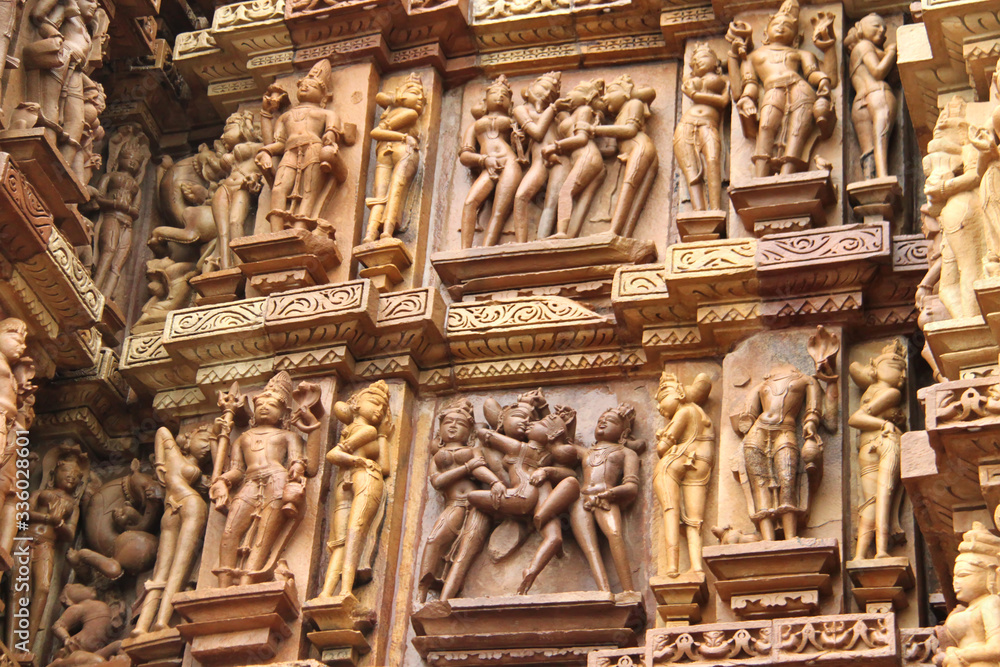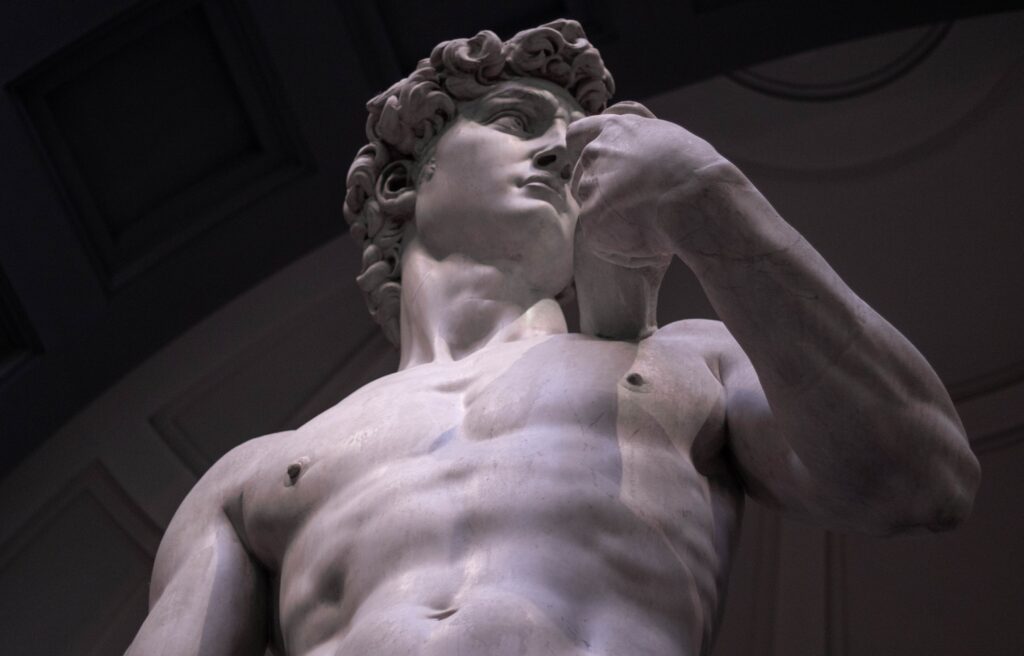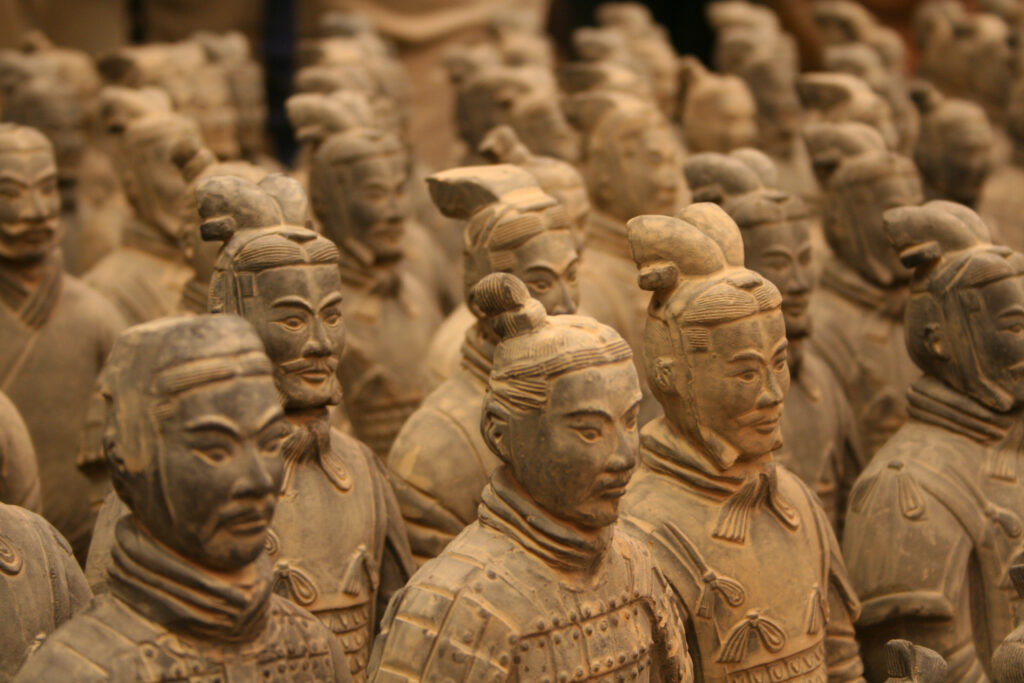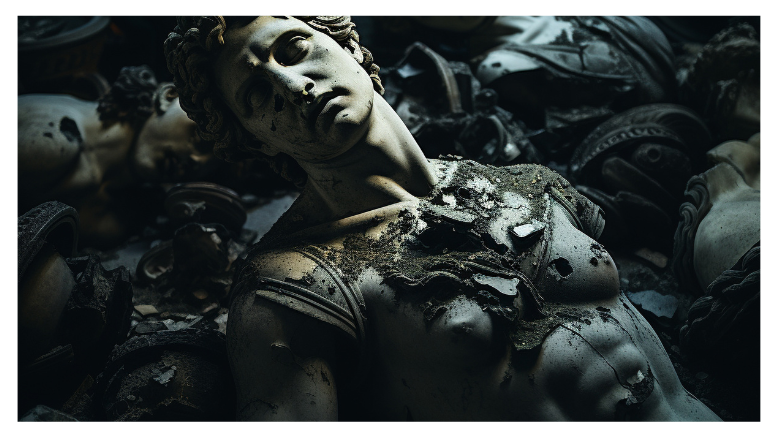Sculpture Art has played a significant role throughout history, serving as a means of expression, commemoration, and cultural reflection. The blog discusses seven such Sculpture Arts from around the world.
WHAT IS SCULPTURE ART?
Sculpture art is a three-dimensional visual art that involves shaping or modelling materials, such as clay, wood, metal, stone, or other materials into a tangible object. It occupies physical space and can be admired from all angles, unlike two-dimensional art forms like painting or drawing.
Sculptors use diverse techniques such as carving, casting, modelling, and assembling to create their works. Sculpture Art can range from small, handheld pieces to large-scale installations and public monuments. It can depict multiple subjects, from realistic human figures to abstract shapes and concepts. Today, you will see creators replicating sculpture art through AI and digital innovations.
SEVEN ICONIC SCULPTURE ART FORMS IN THE WORLD
The world has a rich tradition of Sculpture Art spanning thousands of years. Here are seven such notable examples to cherish for your visual memory.
KHAJURAHO TEMPLES, INDIA
The Khajuraho Temples in Madhya Pradesh, India, are a UNESCO World Heritage site, renowned for their stunning temple architecture and intricate sculptures. Built between the 9th and 11th centuries by the Chandela dynasty, these temples showcase exquisite ancient Indian sculpture art. The statues at Khajuraho depict a wide range of subjects, including deities, celestial beings, dancers, musicians, and erotic scenes. They reflect the rich tapestry of Hindu mythology/history, and daily life in medieval India.
The sculptures were crafted from sandstone, exhibiting remarkable craftsmanship and attention to detail. Its intricate carvings capture the essence of movement and emotion. The art process involved skilled artisans sculpting the stone by hand, using chisels and other tools to create delicate features and elaborate patterns. In addition to their architectural beauty, the Khajuraho Temples are also a testament to ancient India’s cultural and artistic achievements. The art expresses spiritual and aesthetic ideals through its magnificent sculptures.

MICHELANGELO’S DAVID, ITALY, THE FAMOUS SCULPTURE ART
Michelangelo’s David, the world-famous masterpiece of Renaissance sculpture, originated in Florence, Italy, during the early 16th century. Crafted by the renowned Italian artist Michelangelo Buonarroti between 1501 and 1504, the sculptor “David” represents a triumph of artistic skill and humanist ideals. With a single block of marble sourced from the quarries of Carrara, this sculpture exemplifies the art of marble carving. It showcases Michelangelo’s mastery of anatomy, proportion, and form.
“David” stands over 17 feet tall, depicting the biblical hero in a moment of serene determination, poised to confront the giant Goliath. Beyond its religious narrative, David embodies the spirit of the Florentine Republic. It symbolises civic pride, virtuous leadership, and defiance against tyranny. Michelangelo’s David has had a profound cultural influence, inspiring generations of artists and admirers with its unparalleled beauty, craftsmanship, and expressive power, cementing its status as one of the greatest sculptures in the history of Western art.

THE GREAT SPHINX OF GIZA, EGYPT
The Great Sphinx of Giza, one of the most iconic monuments of ancient Egypt, stands as a testament to the grandeur and ingenuity of the Egyptian civilisation. Believed to have been built during the reign of Pharaoh Khafre in the 3rd millennium BCE, the Sphinx is a colossal limestone statue with the body of a lion and the head of a human, likely representing the king himself or the sun God Ra. Carved from a single piece of bedrock, the Sphinx demonstrates Egyptian monumental sculpture art. The symbolic significance and meticulous craftsmanship characterise its enormous scale.
Despite enduring centuries of erosion and weathering, the Sphinx continues to captivate the imagination of people worldwide, serving as a symbol of ancient Egyptian culture, power, and charm. Its enigmatic presence at the Giza Necropolis has inspired countless myths, legends, and archaeological inquiries. The Great Sphinx is a timeless expression of the human fascination with ancient mysteries.

TERRACOTTA ARMY, CHINA
The Terra Cotta Army, a remarkable discovery in archaeological history, originated in the mausoleum of the first Emperor of China, Qin Shi Huang, in the 3rd century BCE. This vast collection of life-sized clay soldiers, horses, and chariots was created to accompany the emperor into the afterlife and to protect him in the underworld. Crafted using moulds and assembled by hand. Each terra cotta warrior is unique, displaying intricate details of armour, weaponry, and facial features.
The Terra Cotta Army represents a monumental achievement in sculpture art, embodying ancient Chinese craftsmanship. In addition to its artistic significance, the Terra Cotta Army holds immense cultural and historical importance, offering valuable insights into the military, political, and religious beliefs of the Qin Dynasty. Its discovery in 1974 revolutionised our understanding of ancient China. The sculptures have sparked widespread fascination with their rich cultural heritage, illustrating China’s enduring legacy and global cultural influence.

MOAI STATUES, CHILE, THE ICONIC SCULPTURE ART
The Moai Statues of Easter Island, aka Rapa Nui, represent one of the most enigmatic and iconic examples of sculpture art worldwide. They are massive stone figures carved by the indigenous Polynesian Groups between 1400 and 1650 CE on a remote island near the southeastern Pacific Ocean.
The Moai Statues, ranging from around 4 to 10 meters in height, depict human figures with distinctive facial features and elongated heads. These volcanic tuff sculptures showcase the skill and ingenuity of the Rapa Nui people, who used stone tools to carve and transport the statues. The Moai Statues are believed to have held deep spiritual and cultural significance. They also represent ancestral spirits or chiefs, and as markers of tribal territories. Today, they stand as enduring symbols of Rapa Nui culture and heritage, attracting foreign tourists and inspiring a fascination with the mysteries of Easter Island’s ancient past.

JOMON VENUS, JAPAN
The Jomon Venus figurines, dating back to Japan’s prehistoric Jomon period (approximately 14,000–300 BCE), are among the earliest examples of sculpture art in Japanese history. These tiny clay figurines often depict female forms with exaggerated features such as large breasts, broad hips, and pronounced abdomens. They are notable for their abstract, geometric style.
Jomon Venus figurines are handcrafted by coil-building and pinching techniques, reflecting ancient Japanese hunter-gatherer cultures’ artistic expressions and cultural practices. The exact purpose and meaning of these figurines remain unknown. However, they are believed to have held ritualistic or spiritual significance, possibly related to fertility, protection, or ancestor worship. The Jomon Venus figurines represent a significant aspect of Japan’s artistic heritage. They offer valuable insights into the beliefs and aesthetics of its prehistoric inhabitants.

POU KAPUA, NEW ZEALAND, THE FORGOTTEN SCULPTURE ART
Pou Kapua, aka carved totems, found throughout New Zealand, are iconic examples of Māori sculpture art in New Zealand. They hold deep cultural and spiritual significance within Māori communities. The monumental wooden totems originated from ancient traditions that serve as cultural markers and spiritual guardians, marking significant sites, pathways, and landmarks.
Pou Kapua is meticulously carved from native New Zealand timber, such as Totara or Kauri, using traditional techniques passed down through generations by skilled Māori artisans. These statues embody the essence of Māori identity, heritage, and connection to the land. Adorned with intricate carvings, they depict ancestral figures, tribal symbols, and spiritual motifs. Pou Kapua serves as an expression of artistic craftsmanship. They also symbolise the enduring presence and cultural resilience of Māori traditions in New Zealand’s landscapes, inviting tourists to engage with and appreciate the rich cultural heritage of the country’s indigenous people.


